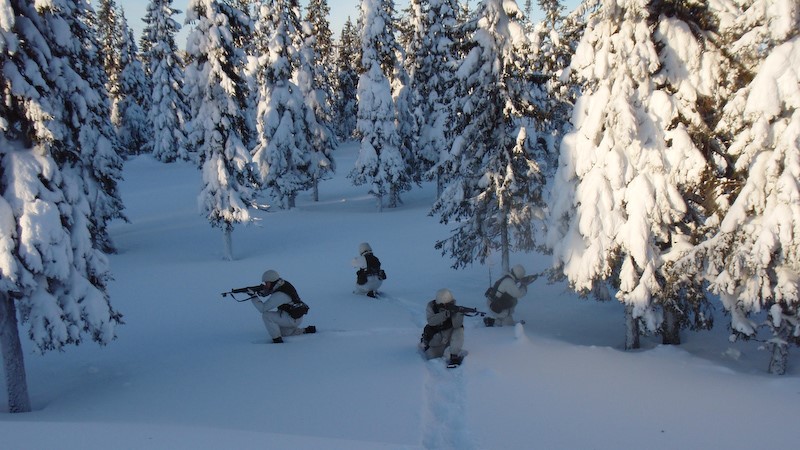Russia’s annexation of Crimea has rekindled discussion in Sweden
about raising military spending and, potentially, pushing for NATO membership. In an email interview,
Jan Joel Andersson, senior research fellow and head of the North America Program at the Swedish Institute of International Affairs, explained Sweden’s defense posture and how it may change after the Ukraine crisis.
WPR: What is the current size and strength of Sweden's military, in terms of both hardware and personnel?
Jan Joel Andersson: The Swedish armed forces have undergone a dramatic transformation since the end of the Cold War. Never a member of NATO, Sweden based its defense on universal male conscription and a comprehensive domestic arms industry. During the Cold War, the Swedish armed forces were prepared to mobilize an army of some 700,000 troops, dozens of submarines and one of the strongest air forces in Europe with some 500 front-line fighter jets. Once the Cold War ended, the Swedish armed forces were reduced and most fortifications and base structures closed down. Conscription was abolished in 2010. Today, the Swedish military is reorganizing into a small but well-equipped standing professional force of some 21,000 supplemented by an additional 9,000 part-time troops. This force is supported by an additional 22,000 local defense forces for territorial protection. The navy is currently down to five submarines, a number that will soon be further reduced to four, and the air force front-line fighter force is down to 98 Saab Gripen C/D fighter jets. Recent acquisitions include new Blackhawk and NH90 medium-sized helicopters. Announced new or updated equipment to arrive in the coming years includes upgrades to the army’s Leopard 2A6 main battle tanks, a new version (E/F) of the Gripen fighter for the air force and new submarines for the navy.
WPR: How large is Sweden's defense industrial base and what are its key outputs?
Andersson: Like its armed forces, the Swedish defense industry has undergone dramatic changes since the end of the Cold War. One of the prominent defense industries in Europe, the Swedish defense industry has been completely privatized, has successfully shifted from domestic market reliance to export and has become partly foreign-owned. While the Swedish company Saab still dominates the Swedish defense industry, BAE Systems has taken control of the venerable gunmaker Bofors and the armored vehicle producer Hagglunds, while Thyssen-Krupp of Germany owns submarine maker Kockums.
The key outputs of Sweden’s defense industry are fighter jets, radar systems, missiles, anti-tank systems, armored vehicles and submarines. Saab Gripen fighter jets are operated by not only Sweden, but also NATO members the Czech Republic and Hungary, as well as South Africa and Thailand. Recently, Brazil and Switzerland announced that the Gripen was their preferred choice for their next fighter. Other key Saab products are the Erieye airborne early warning and control system—operated by Sweden, Brazil, Greece, Mexico, Thailand, Pakistan and the United Arab Emirates—and the Carl-Gustaf and AT4 shoulder-launched light anti-tank weapons, used by the U.S. Army among many others. BAE Systems Hagglunds has achieved worldwide export success with its BV206/BvS10 tracked transport vehicles and CV90 infantry fighting vehicles, while Thyssen-Krupp Kockums has sold submarines and submarine designs to Australia and Singapore.
WPR: How has the Ukraine crisis affected Sweden’s assessment of its security partnerships with the EU and NATO?
Andersson: Officially, Sweden has for many years maintained a policy of military nonalignment, relying on a relatively strong national defense and informal security ties to both the U.S. and select Western European countries for its security during the Cold War.
However, the Ukraine crisis has rattled some nerves in Sweden and given its leadership a new impetus to re-evaluate Sweden’s defense posture after the drastic cuts made to the country’s defense organization since the end of the Cold War. The Ukraine crisis has also led to increasing calls from both the public and leading politicians for the Swedish military to again refocus on the territorial defense of Sweden after a decade of almost exclusive focus on international missions abroad under NATO, European Union or U.N. flags.
While Sweden remains an active proponent of security cooperation within the EU, the Ukraine crisis has also led to an intensifying debate in Sweden, inside and outside the government, on the merits of NATO membership. With national elections in September, defense policy and Sweden’s future security partnerships may now very well become a central electoral issue.

